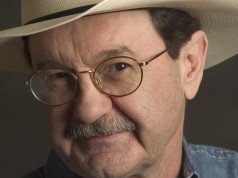Thanksgiving… let’s eat!
America’s most food-focused holiday traces its roots back to the abundant feast that Pilgrims and Indians enjoyed together in the fall of 1621.
Only half of the Mayflower Pilgrims who’d arrived at Plymouth Rock the previous December survived their first year in the New World (new, of course, only to those undocumented immigrants from England, not to the local citizens). Still, to celebrate and offer thanks for their survival, the newcomers planned a communal meal following the fall harvest. And in appreciation for being taught by the Wampanoag people how to raise corn and gather the region’s seafood, they invited Massasoit, the tribal leader, to join them. He did… surprising the hosts by arriving with 90 members of his community! But the Wampanoag party didn’t come empty handed, bringing much of the fare for what became a three-day banquet featuring venison, duck, geese, wild furkees (Wampanoag for gobblers), eels, mussels, lobster, gooseberries, plums, cornmeal pudding, popcorn balls (who knew!), barley beer and fortified wine. And you thought you over-ate at Thanksgiving!
But this was not the first precursor of our annual November Food-a- Palooza. Texans assert that it began near El Paso in 1598, when the Manso and Piro tribes roasted ducks, geese and fish over an open fire to give sustenance to a lost and bedraggled group of Spanish colonizers. Meanwhile, Floridians insist that the firstest-of-all Thanksgivings was in 1565, when the Timucuan people shared a stew of salt pork and garbanzo beans with Spanish settlers at St. Augustine.
These interesting tidbits raise an equally interesting question for us to ponder this Thanksgiving: What would have happened to those Pilgrims and Spanish settlers if the Native Americans had Donnie Trump around to build “a big beautiful wall?”
This opinion column does not necessarily reflect the views of Boulder Weekly.













